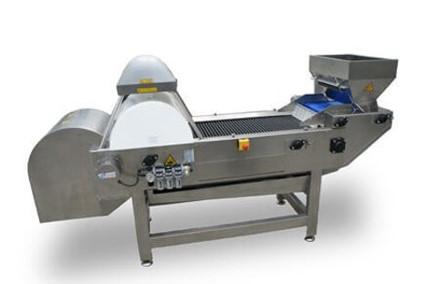#5 UGLY FOOD IDENTIFICATION
#5 UGLY FOOD IDENTIFICATIONLiving Lab #5: Ugly food identification
Ugly food identification
It is estimated that one third of the EU's total agricultural production is discarded as "ugly" food, although of perfectly good quality and fit for human consumption. To avoid this waste, ugly food needs to be identified in advance through an effective assessment that guarantees quality and provides accurate shelf-life information.
This Living Lab aims to classify tomato production at an early stage by quality and usefulness/shelf life by applying non-destructive and multi-attribute analysis techniques by VIS-NIR to single fruits. Moreover, the viability of the line identification of organic tomato by a novel technology using mass spectrometry on a small sample will be tested for future full-scale implementation.
The problem of identification of ugly food: A useful life analysis
- Identification of ‘ugly food’ or non-compliance to retail requirements at a late stage reduces the possibilities for alternative valorisation.
- Marketing and logistics decisions towards reducing FLW are difficult, as reliable information on food shelf-life losses and alternative opportunities are missing.
- Shelflife estimations/approaches are not accurate and it takes an excessive amount of time to avoid food waste.
- Analysis to certify that samples are organic take too long, and it may happen that an order identified as organic is not, and has been sold as organic, resulting in a claim by the customer and food waste.
Did you know?
Approximately one third of the EU's total agricultural production is lost as "ugly" food, although of perfectly good quality and fit for human consumption.
Recovery strategies with an impact
- To improve value chain optimization and transparency by means of non-destructive analysis and multi-attribute classification techniques.
- To study and improve the recovery practices for FLW.
- To improve storage and logistics management.
- To increase forecasting and sharing of information regarding the studied value chains.
- Further collaboration efforts within the supply chain involving producer, retailer and consumer.
- To determine potential technological solutions and further developments to be implemented.

Expected outcome
The technology tested allows “ugly food” selection to be performed at a very early stage in an efficient manner. The main innovation is the combination of artificial intelligence (AI) and real-time data processing techniques with further hardware development which would facilitate non-destructive sensor deployment in industrial environments.
The final products/services will be:
- Multi-sensor platform with capacity to analyse and process around 300,000 fruits / hour and with the possibility of classification in three different outputs based on quality, shelf-life parameters and organic/inorganic origin.
- Portable mass spectrometry able to identify organic tomato samples.
- Data service platform to control input produce.
This technology would enable producers and other actors of the production chain to save a lot of energy, time, money and other resources.
The producer will be able to avoid discarding food, also optimising logistical aspects of storage as it would be possible to manage batches of products with the same shelf life.
On the retail side, it will be possible to buy products with a known shelf life, providing better offers to the consumer and better logisticsand storage management.
Life cycle stage:
Total FLW reduction objective:
Processing
4%
Wholesale and Retail
1%
It is the ambition of this Living Lab to reduce the FLW in two steps of the production chain:
Table 1: FLW redeuction in two steps of the production chain
Partners
CTA (multisectoral innovation cluster) is the leader of this Living Lab, IFAPA is involved as research and transfer Institute, GRUPO LA CAÑA as host demonstrator and MULTISCAN as technology developer specialised on spectroscopy.
See video: Systemic Innovation Living Lab 5
Ugly food early identification, shelf-life assessment & alternative valorisation

